I adore roses. My favourite time of the year is early June, when the delicious honey scent of hundreds of climbing yellow roses infuses every room of my old stone house. On another side, the gnarled trunks of an ancient rose tree rest against the cobbled wall, giving life to slowly unfurling pale pink roses with their heavenly scent. Are you a rose lover as well? If so, here are 5 places in Paris where you can go to see, admire (and smell) the roses.
Roseraie du Val-de-Marne
This beautiful garden south of Paris has 11,000 rose bushes and around 2,900 different species of roses, making it one of the most significant rose collections in the world. Just over half of the rose varieties were created before 1916!
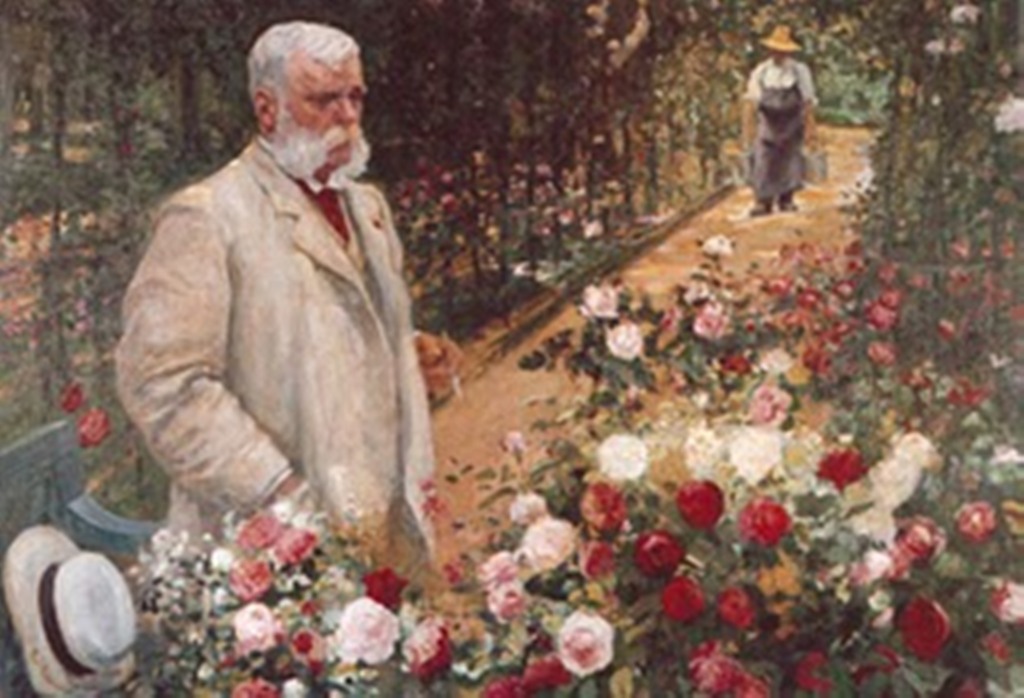
The garden is a work of art in itself, the pavillons protected with heritage status, but it’s the fragrant scent of the roses which pervades the senses. It was created by Jules Gravereaux, who made his fortune with the popular Parisian department store Bon Marché. Having taken early retirement in his large estate in the town of L’Haÿ, he started collecting and cultivating all kinds of roses; when in 1899 he had amassed more than 1600 varieties it was time to call in well known landscape architect Édouard André, who designed an exquisite yet tranquil French-style garden space for the rose collections. Such was the popularity of the garden that in 1914 the town changed its name to L’Haÿ-les-Roses.
Jules Gravereaux died in 1916, but not before he had perfected the art of creating hybrid roses renowned for their perfume, as well as distilling their sweet-smelling rose oil.
Plan your visit for June, when most of the roses are in full bloom. Take a stroll down the classically lined paths, under rose-laden bowers, stopping to take in the perfume of the historic garden roses. Many of these were created between 1850 and 1945, and have since largely disappeared, except in collector’s gardens. There are also more recently created modern roses with larger blooms, and a special collection of tea roses.
In 2021, the Roseraie Val-de-Marne is open from 1 May to 19 September, 10am to 7pm daily. Take a look at their website for further information. It’s my favourite place to see the roses in Paris!
Parc de Bagatelle
The Parc de Bagatelle is one of the four botanical gardens of the City of Paris (the others being the Parc Floral de Paris, l’Arboretum de l’Ecole Du Breuil and the Jardin des Serres d’Auteuil). At the heart of the Parc is the elegant yet relatively tiny Château de Bagatelle, built by the brother of Louis XVI, the Count of Artois (and the future Charles X). The story goes that after he purchased the estate, Marie-Antoinette jested that he couldn’t build a new château by the next time they meet, which was to be in 3 months. Challenge accepted, the royal brother spent an absolute fortune in architects, materials and labour, but apparently after 64 days it was a fait accompli. For what purpose? So that tired, royal legs would have a place to rest and recover after a hard day’s hunting in the accompanying forest of the Bois de Bologne.
As for the rose garden, it was not planted until the early 20th century. In 1905, the estate now owned by the city of Paris, much of the garden was re-planted for easier public access and education. Thanks to a very generous donation of 1500 varieties of roses from Jules Gravereaux’s garden in L’Haÿ, the garden was transformed into a perfumed paradise. 1907 saw even more roses, with the creation of the Concours international des Roses nouvelles de Bagatelle, a world competition to trial and assess new roses. The competition is still held every year in June, in the Parc de Bagatelle.
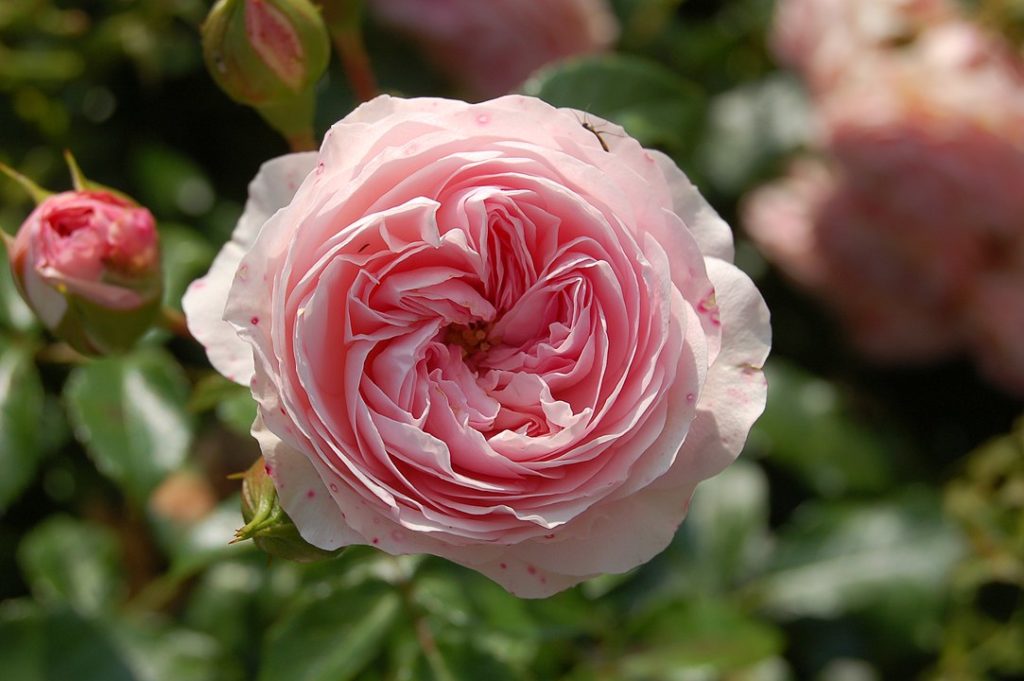
June is definitely the month to see the roses in Paris in this Parc, but it’s open all year round to see the other plants as well. This link is a fantastic site about the Parc, its photos just bursting with colour, as well as having all the necessary tourist information.
Jardin des Plantes
The rose garden at the Jardin des Plantes is fairly recent, having been created only in 1990, but the garden itself is ancient. In 1626 a Jardin royal des plantes médicinales was established by the order of Louis XIII, in order to further knowledge about the medicinal properties of plants. Over the next several hundred years many important discoveries in botany, medicine and natural history would be made, under the direction of talented scientists such as Emmanuel Le Maout, whose beautiful hand painted botanical prints you can see here.
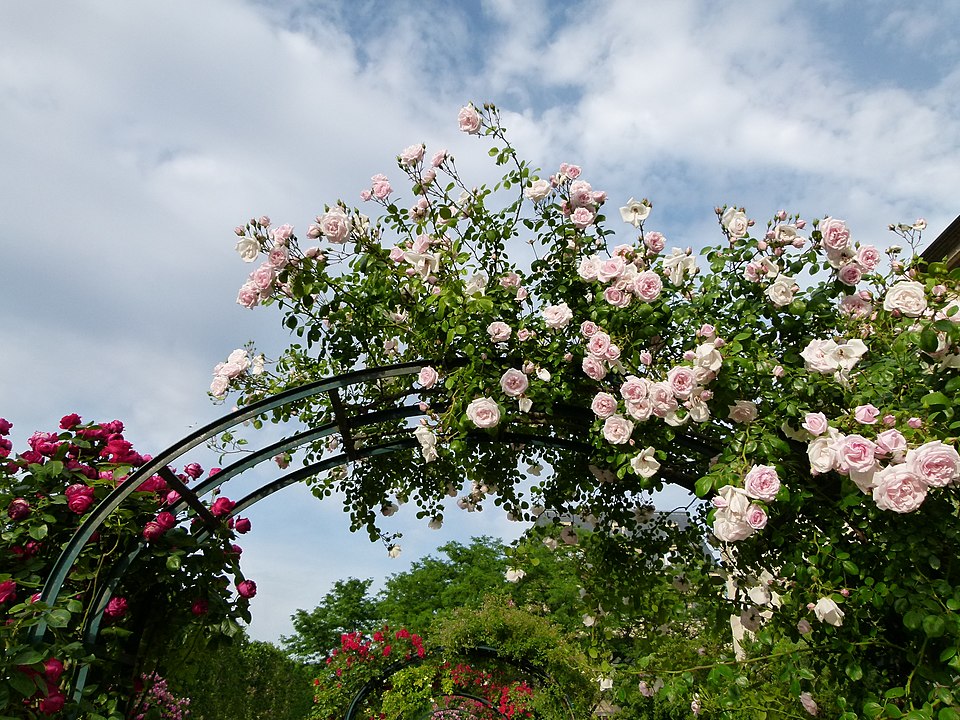
You’ll be able to smell the rose garden before you see it. It’s small, but contains contains around 390 varieties of ancient and modern roses. Its scented walkway is covered in curved rose arbours, while its borders are filled with pastel coloured roses. You can also visit the various greenhouses, the alpine garden, and the animal menagerie which made its way to the Jardin des Plantes from Versailles following the French Revolution in 1789.
The link to the official site of the Jardin des Plantes is here. The grounds also include the buildings of the Natural History Museum.
Josephine’s Rose Garden at the Château of Malmaison
In 1799, Josephine de Beauharnis, recently married to Napoléon Bonaparte and something of a spendthrift, purchased a rundown château with enormous grounds in Rueil-Malmaison, 12 km from Paris. On his return from glorious victory in the Italian campaign, his pockets full of gold and his carriages stuffed with stolen artworks, Napoléon was rather displeased to learn he would have to part with much of his war gains in order to pay for this large and dilapidated house. However, he could rarely say no to Josephine, she being the love of his life (you can read more about their love story here), and after several years and much spending, the house and estate were being fêted for their elegance and beauty. And Josephine’s rose garden would become famous around the world.
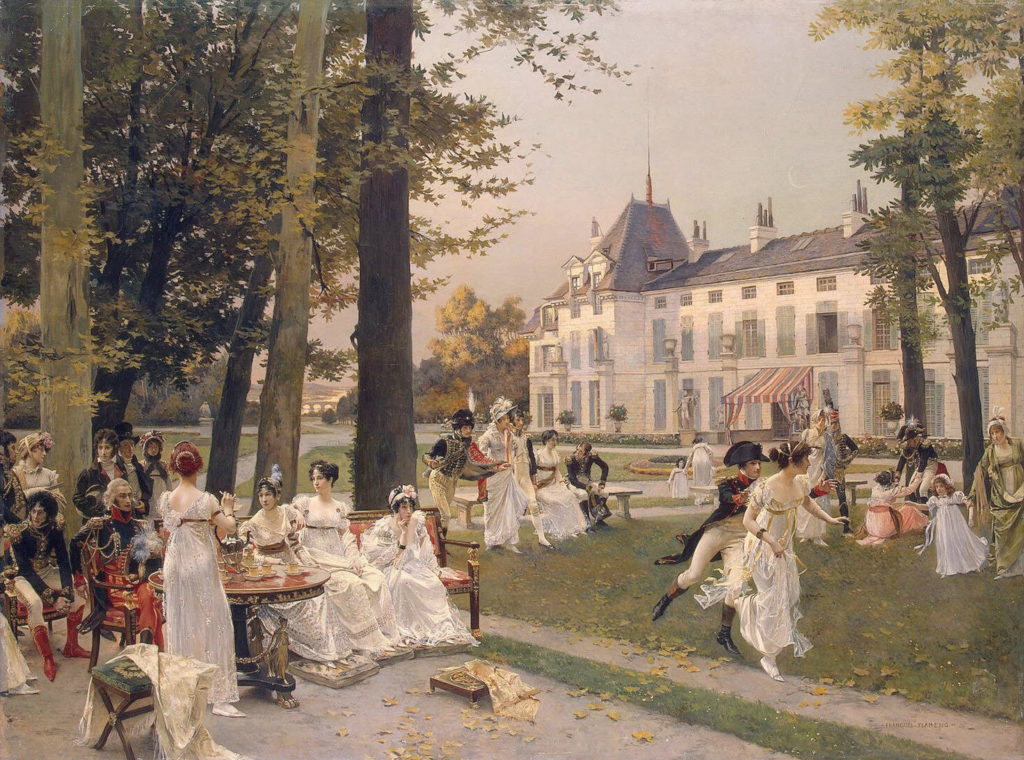
One of the advantages to being married to a military commander and later Emperor, was that Josephine was able to acquire plant and flower species from all the world. Between 1804-1814 she collected and planted over 250 different varieties of roses, and her rose garden became a popular attraction for visitors. In 1913, Josephine declared “My garden is the most beautiful thing in the world”. It was her inspiration – for one formal event as Empress she wore a pink crepe dress covered entirely in fresh pink petals (beautiful, but completely impractical if one had to sit or move). Apart from the roseraie, there were canals and a dairy, a Temple of Love and a menagerie of animals including a kangaroo, ostrich and an orang-utan. (It seems it was perfectly acceptable for an Empress to spend money lavishly on gardens and farms, ‘crimes’ which had led Marie-Antoinette to the guillotine only 10 years prior)
Josephine remained at Malmaison until she died there, in her bedroom, in 1814. Unfortunately, her garden did not survive long past her death; the roses were soon trampled upon by spectators, or ripped from the earth and stolen.
Now, you largely have to use your imagination when you visit the Château of Malmaison. The grounds are still lovely, but the rose garden is a work in progress. I still recommend visiting Malmaison to see the roses. Look carefully around you for the vibrant pink rose named Souvenir de la Malmaison, created after her death but a wonderful reminder of the fragrance and beauty of Josephine’s rose garden.
Malmaison is usually open every day, except Tuesdays, but you can check for updated information at their website.
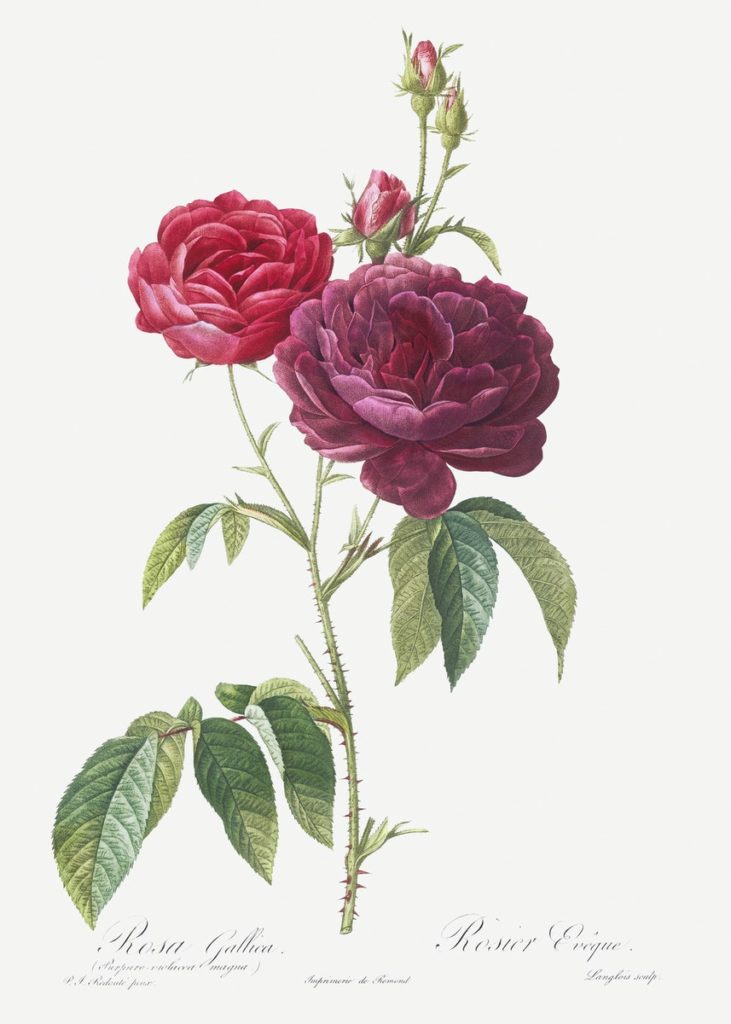


Click here to purchase a printable set of Redouté’s roses
Marché aux fleurs et aux oiseaux
Any day of the week, on the Île de la Cite, happily installed between Notre-Dame Cathedral and Saint-Chapelle, you’ll find the Marché aux fleurs et aux oiseaux, or the Bird and Flower Market. Established in the early 19th century along the Quai de Corse, the market is partly outdoors and partly sheltered under metal pavillons which have existed since its creation. Meander along alleys and rows of richly coloured rosiers, or choose a freshly picked and bright bouquet for your dining room table. Here are flower and plant sellers who know their stuff; do you have a question about where to plant your newly purchased rose bush? Ask away! On a Sunday the market is filled with birds and animals, though you can still find flowers.
There are plans afoot to reinvigorate the Flower Market – it is a beautiful place, and perfect for adding some local floral colour to your Instagram account, but it is looking a little tired. In 2023 the City of Paris will begin a two year restoration project, and the market will bloom even more brightly than before.
The link to the official Paris Tourism website is here
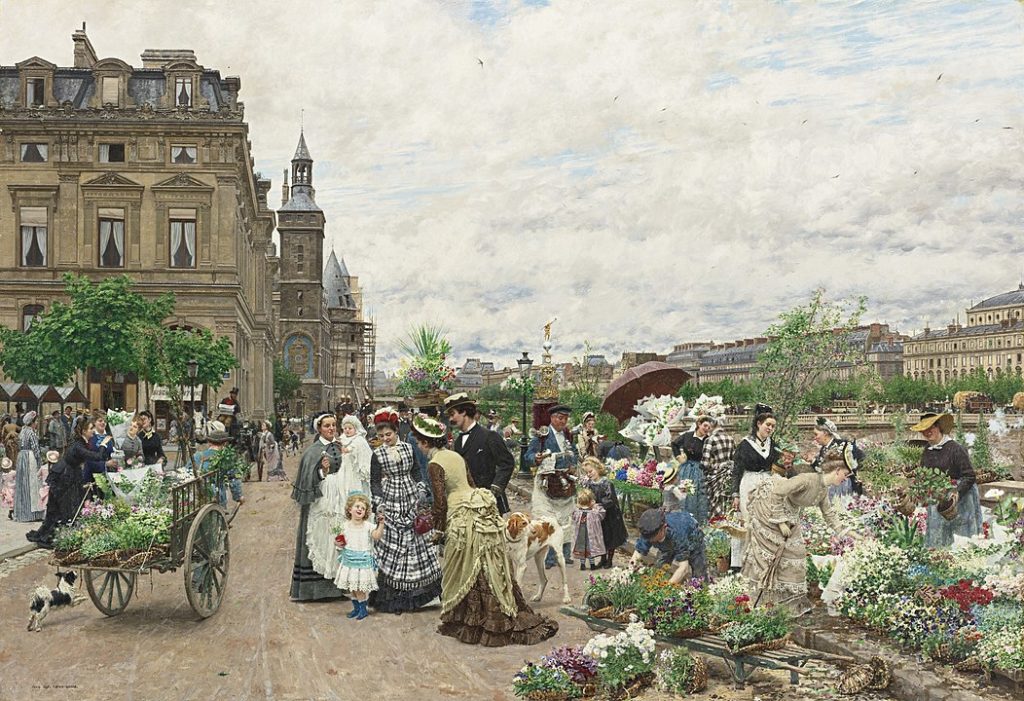
In which places in Paris have you seen (and inhaled the perfume of) the roses? Which is your favourite? Tell me in the comments below.
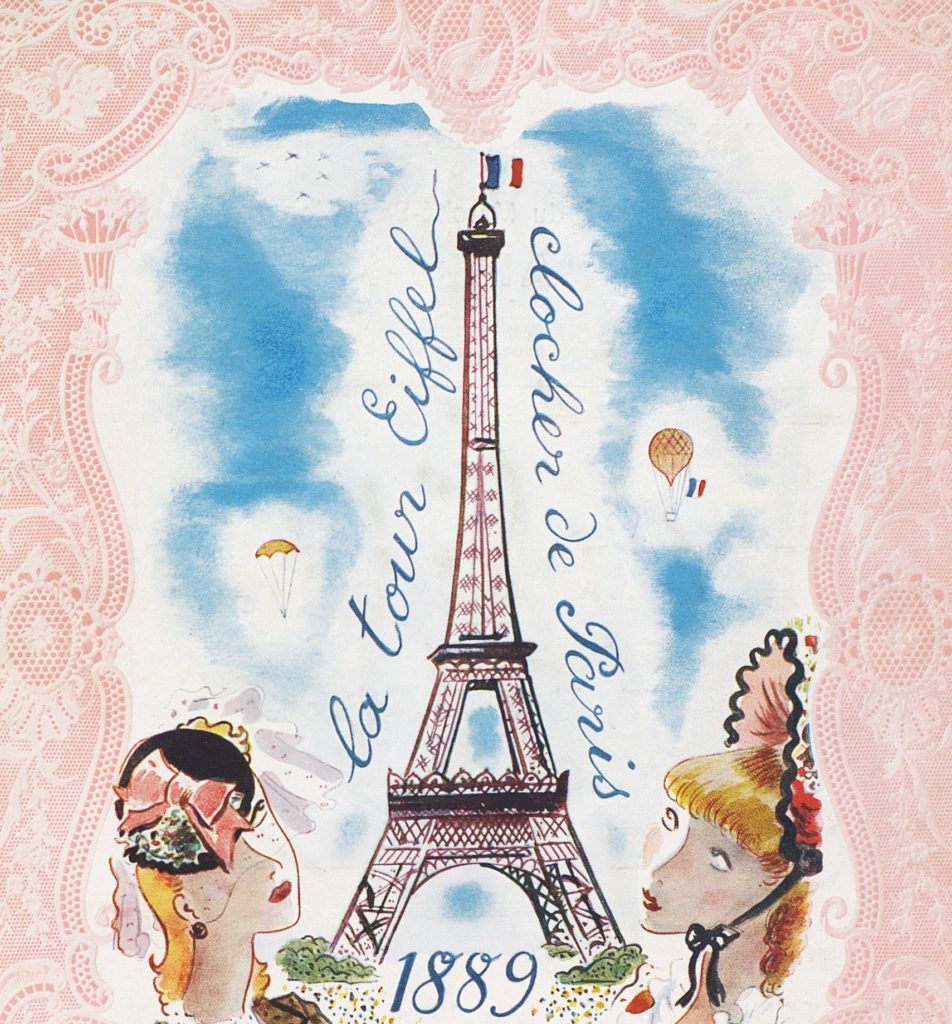
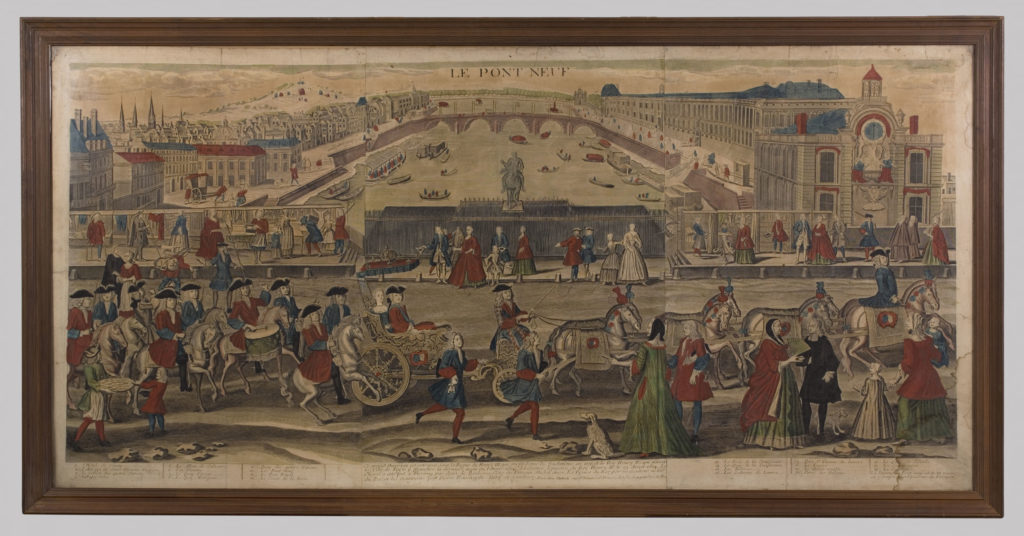

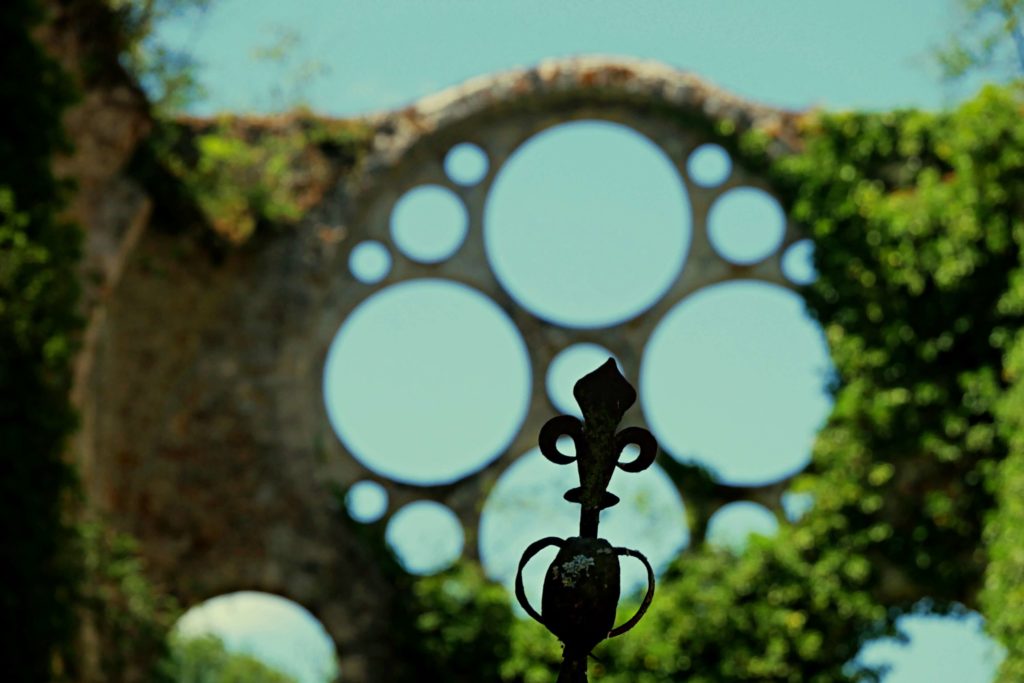
What a beautifully crafted post. I adore roses too. Yellow ones are my favourites. It’s been a while since I’ve been to Paris and it was the height of summer and December! I bet Paris is so gorgeous this time of year and seeing lots of roses against its wonderful architecture would be something special.
Such a lovely comment, thank you Elizabeth. I’ve learnt a lot from your amazing blog about writing history posts! The roses are a little late this year, but I can’t wait to do some more exploring in Paris in search of blooms.